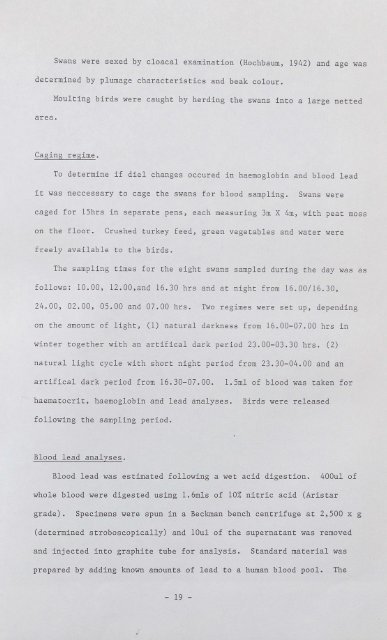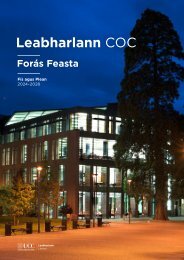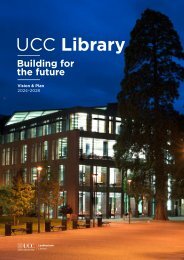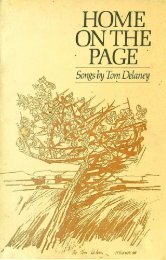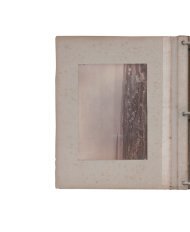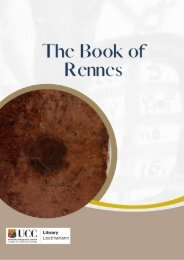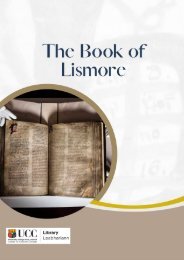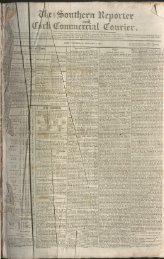Lead Toxicity in Mute Swans
LEAD TOXICITY IN MUTE SWANS Cygnus olor (Gmelin). By JOHN O'HALLORAN A thesis submitted to the National University of Ireland in candidature for the degree of Doctor of Philosophy September 1987
LEAD TOXICITY IN MUTE SWANS
Cygnus olor (Gmelin).
By
JOHN O'HALLORAN
A thesis submitted to the National University of Ireland
in candidature for the degree of Doctor of Philosophy
September 1987
You also want an ePaper? Increase the reach of your titles
YUMPU automatically turns print PDFs into web optimized ePapers that Google loves.
<strong>Swans</strong> were sexed by cloacal exam<strong>in</strong>ation (Hochbaum, 1942) and age was<br />
determ<strong>in</strong>ed by plumage characteristics and beak colour.<br />
Moult<strong>in</strong>g birds were caught by herd<strong>in</strong>g the swans <strong>in</strong>to a large netted<br />
area.<br />
Cag<strong>in</strong>g regime.<br />
To determ<strong>in</strong>e if diel changes occured <strong>in</strong> haemoglob<strong>in</strong> and blood lead<br />
it was neccessary to cage the swans for blood sampl<strong>in</strong>g.<br />
<strong>Swans</strong> were<br />
caged for 15hrs <strong>in</strong> separate pens, each measur<strong>in</strong>g 3m X 4m, with peat moss<br />
on the floor.<br />
Crushed turkey feed, green vegetables and water were<br />
freely available to the birds.<br />
The sampl<strong>in</strong>g times for the eight swans sampled dur<strong>in</strong>g the day was as<br />
follows: 10.00, 12.00,and 16.30 hrs and at night from 16.00/16.30,<br />
24.00, 02.00, 05.00 and 07.00 hrs. Two regimes were set up, depend<strong>in</strong>g<br />
on the amount of light, (1) natural darkness from 16.00-07.00 hrs <strong>in</strong><br />
w<strong>in</strong>ter together with an artifical dark period 23.00-03.30 hrs. (2)<br />
natural light cycle with short night period from 23.30-04.00 and an<br />
artifical dark period from 16.30-07.00.<br />
l.5ml of blood was taken for<br />
haematocrit, haemoglob<strong>in</strong> and lead analyses.<br />
Birds were released<br />
follow<strong>in</strong>g the sampl<strong>in</strong>g period.<br />
Blood lead analyses.<br />
Blood lead was estimated follow<strong>in</strong>g a wet acid digestion.<br />
400ul of<br />
whole blood were digested us<strong>in</strong>g l.6mls of 10% nitric acid (Aristar<br />
grade).<br />
Specimens were spun <strong>in</strong> a Beckman bench centrifuge at 2,500 x g<br />
(determ<strong>in</strong>ed stroboscopically) and lOul of the supernatant was removed<br />
and <strong>in</strong>ject~d <strong>in</strong>to graphite tube for analysis. Standard material was<br />
prepared by add<strong>in</strong>g known amounts of lead to a human blood pool.<br />
The<br />
- 19 -<br />
I


